Savor the irresistible comfort of these Barbecue Brisket Melts. Picture this: perfectly smoked brisket, complemented by caramelized onions and gooey cheese, all nestled between slices of crusty sourdough bread. The brisket, infused with Bear & Burton’s The W Sauce and Cattleman’s Grill Lone Star Brisket Rub, offers a tantalizing blend of savory flavors. Caramelized onions add a delightful sweet and savory contrast, while a melty combination of American and provolone cheese provides an indulgent finish. Toasted to perfection on a griddle and served alongside Smoke on Wheels Bootleg Barbecue Sauce for dipping, these melts promise a culinary experience that will leave your taste buds craving more.
Barbecue Brisket Melt
Tom Jackson
Rated 5.0 stars by 1 users
Category
Beef
Cuisine
American
Servings
8
Prep Time
15 minutes
Cook Time
10 minutes
Calories
890
Hours Inactive Cook Time
15
Indulge in the ultimate comfort food experience with these mouthwatering Barbecue Brisket Melts. Perfectly smoked brisket, caramelized onions, and gooey cheese are sandwiched between slices of crusty sourdough bread, creating a symphony of flavors and textures. The brisket, infused with Bear & Burton’s The W Sauce and Cattleman’s Grill Lone Star Brisket Rub, boasts a rich and savory taste that melts in your mouth. Caramelized onions add a sweet and savory depth, while a combination of American and provolone cheese provides a gooey, indulgent finish.
Ingredients
- 1 each brisket flat
-
Bear & Burton’s The W Sauce (worcestershire)
-
Cattleman’s Grill Lone Star Brisket Rub
- 4 tbsp unsalted butter, divided
-
1 tbsp extra virgin olive oil
- 2 sweet onions, sliced thin
-
1 tsp Jacobsen Salt Co. Black Garlic Salt
- 4 large slices sourdough bread
- 4 slices provolone cheese
- 4 slices American cheese
-
Smoke on Wheels Bootleg Barbecue Sauce
For the brisket:
For the sandwich:
Directions
- Preheat your Yoder Smokers YS640s Pellet Grill to 190ºF, set up for smoking. Put the brisket flat on the smoker just before going to bed.

- Slather the brisket with a thin layer of The W Sauce. Season with Cattleman’s Grill Lone Star Brisket Rub on all surfaces.
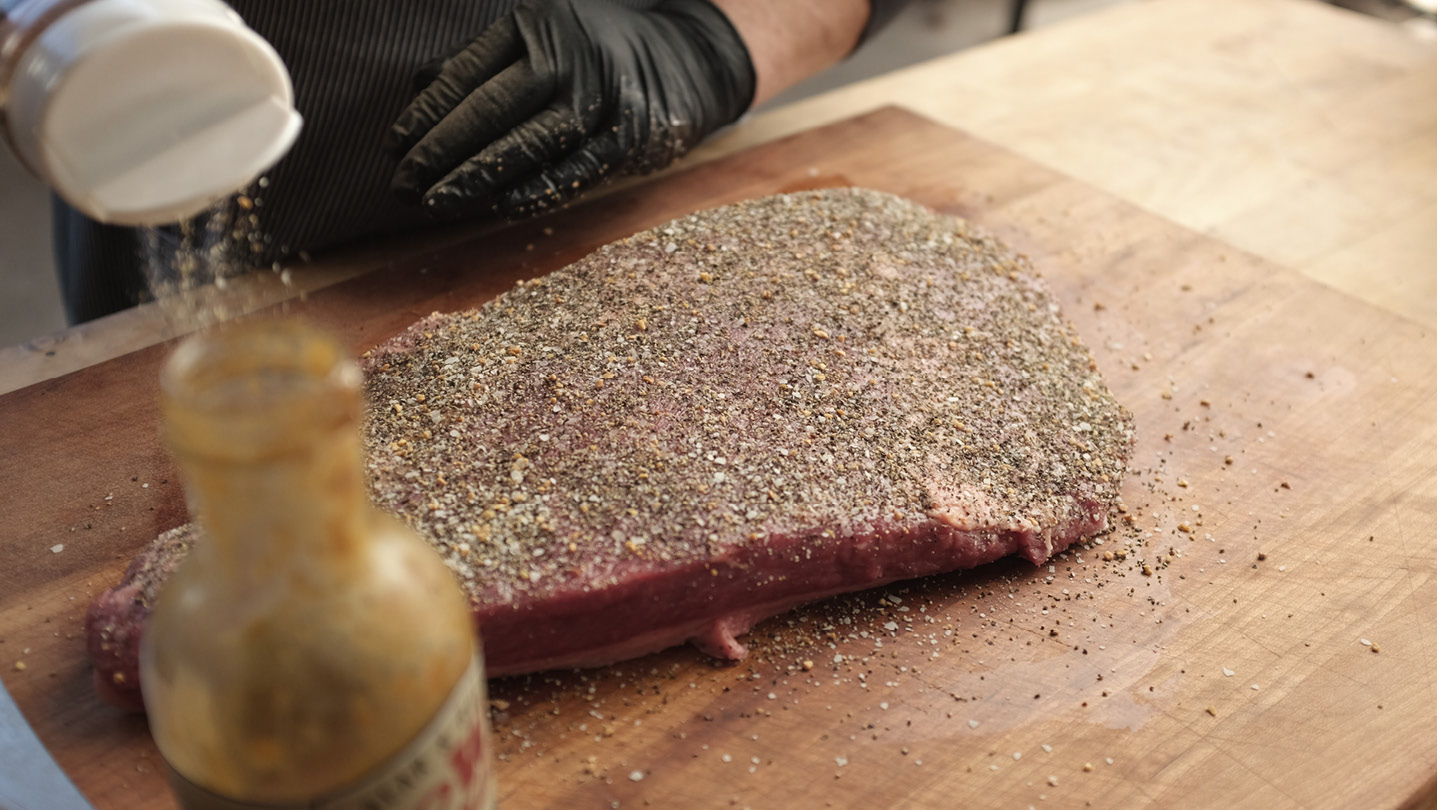
- In the morning (8-10 hours later), turn the grill temperature up to 250ºF. Let the brisket flat form a nice dark bark and the internal temperature come up to about 160ºF. Remove from the smoker to wrap.
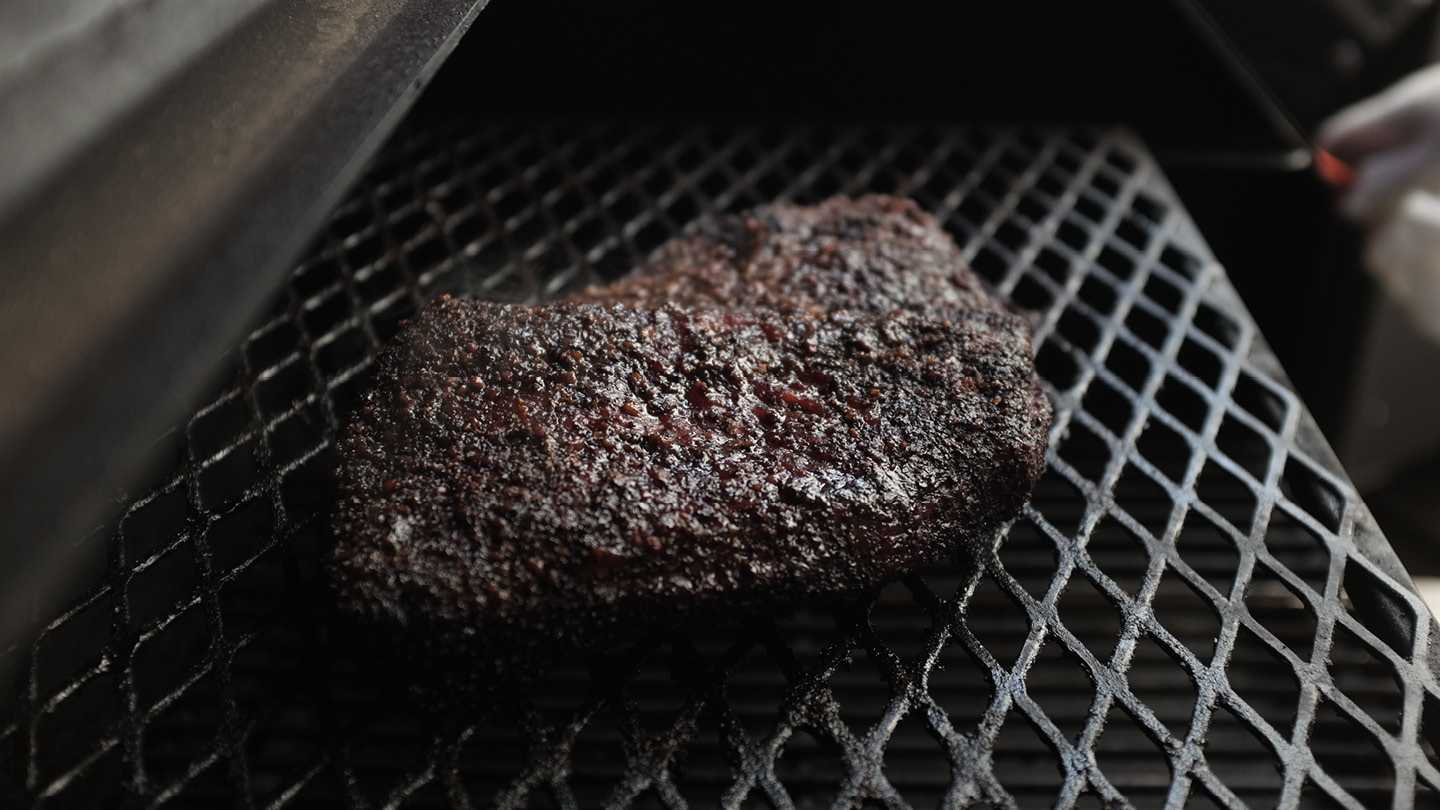
- Place the brisket on top of two sheets of heavy duty foil. Wrap tightly and return to the smoker. Continue smoking until the brisket is probe tender and the internal temperature is around 205ºF. Remove from the grill and place in a cooler to rest for at least an hour.
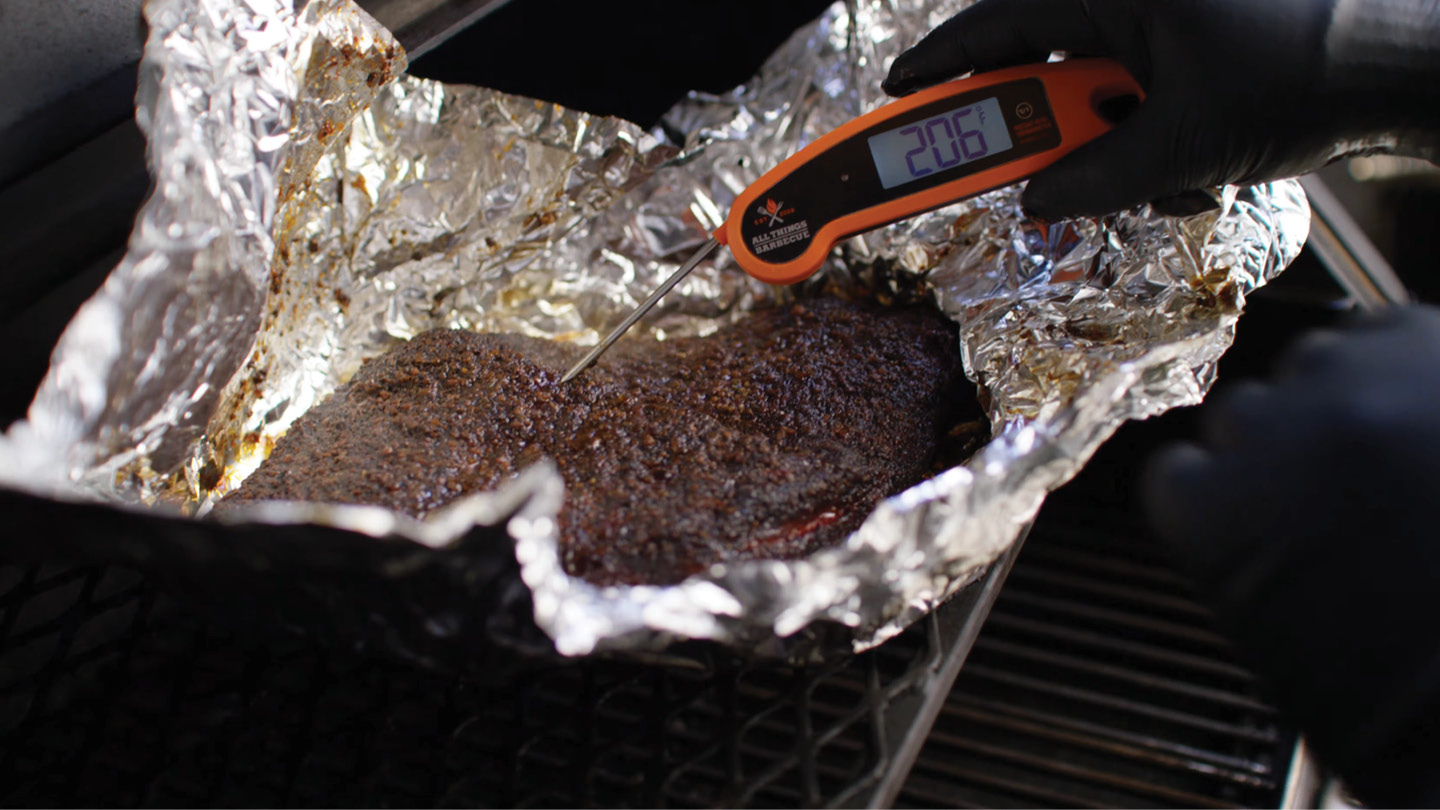
While the brisket rests, make the caramelized onions. Melt two tablespoons butter and one tablespoon extra virgin olive oil in a Lodge 12” Steel Skillet. Add the onions and Jacobsen Salt Co. Black Garlic Infused Sea Salt. Cook over medium low heat until browned and softened, stirring occasionally, about 45 minutes.
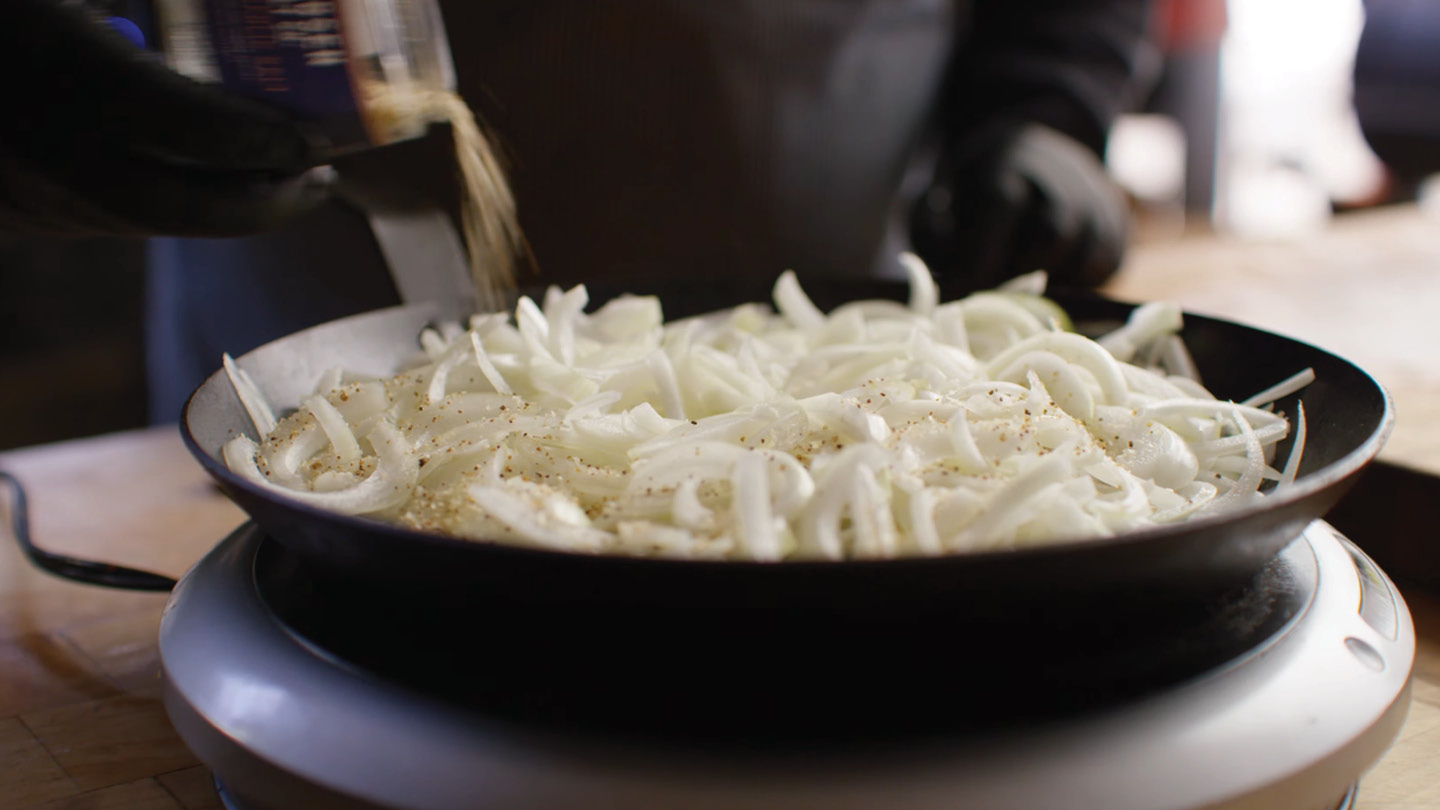
- Slice the brisket across the grain into 1/8”-1/4” slices.

- To build the sandwiches, cover the bottom slice of bread with two slices of American cheese. Place about three slices of brisket on the cheese. Spread the caramelized onions over the brisket. Cover with two slices of provolone, then the top slice of bread.
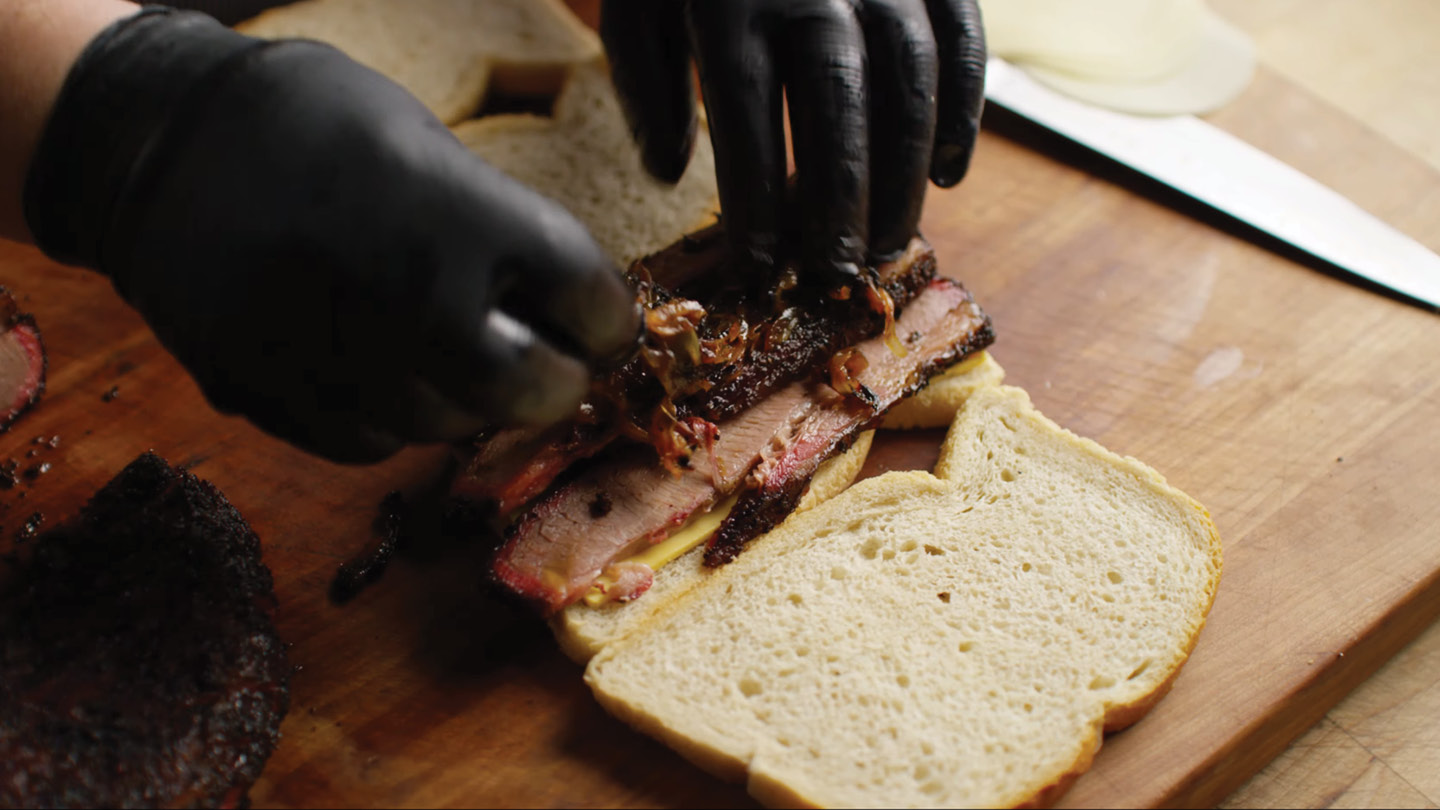
- With the diffuser door removed and a Yoder Smokers griddle installed over the firebox, set the grill temperature to 400ºF. When the griddle is hot, add one more tablespoon of butter to the surface. Toast the sandwiches in the butter. When golden brown, add the last tablespoon of butter and let melt. Flip the sandwiches into the melted butter and repeat the toasting process.
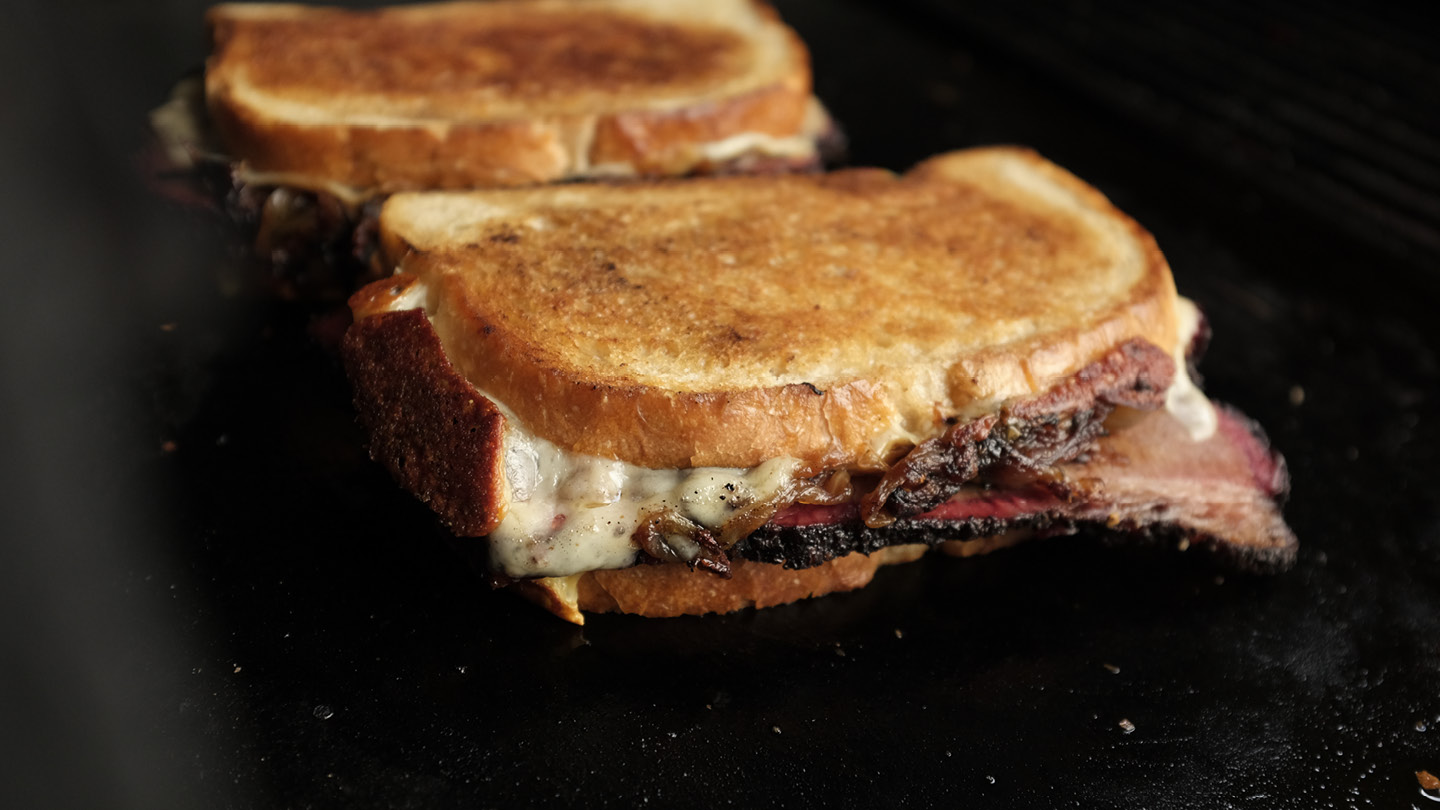
- Serve the barbecue brisket melts with Smoke on Wheels Bootleg Barbecue Sauce for dipping.
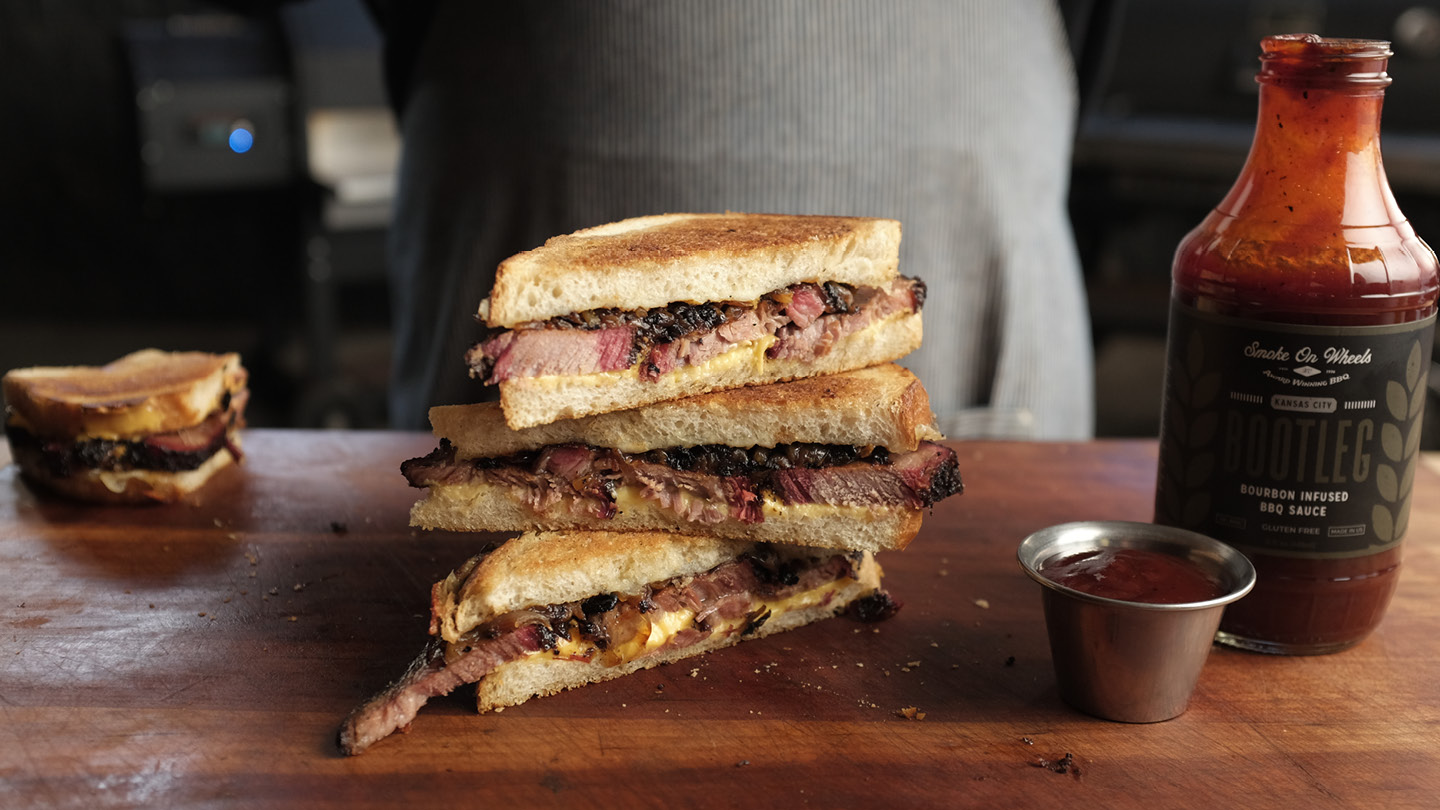
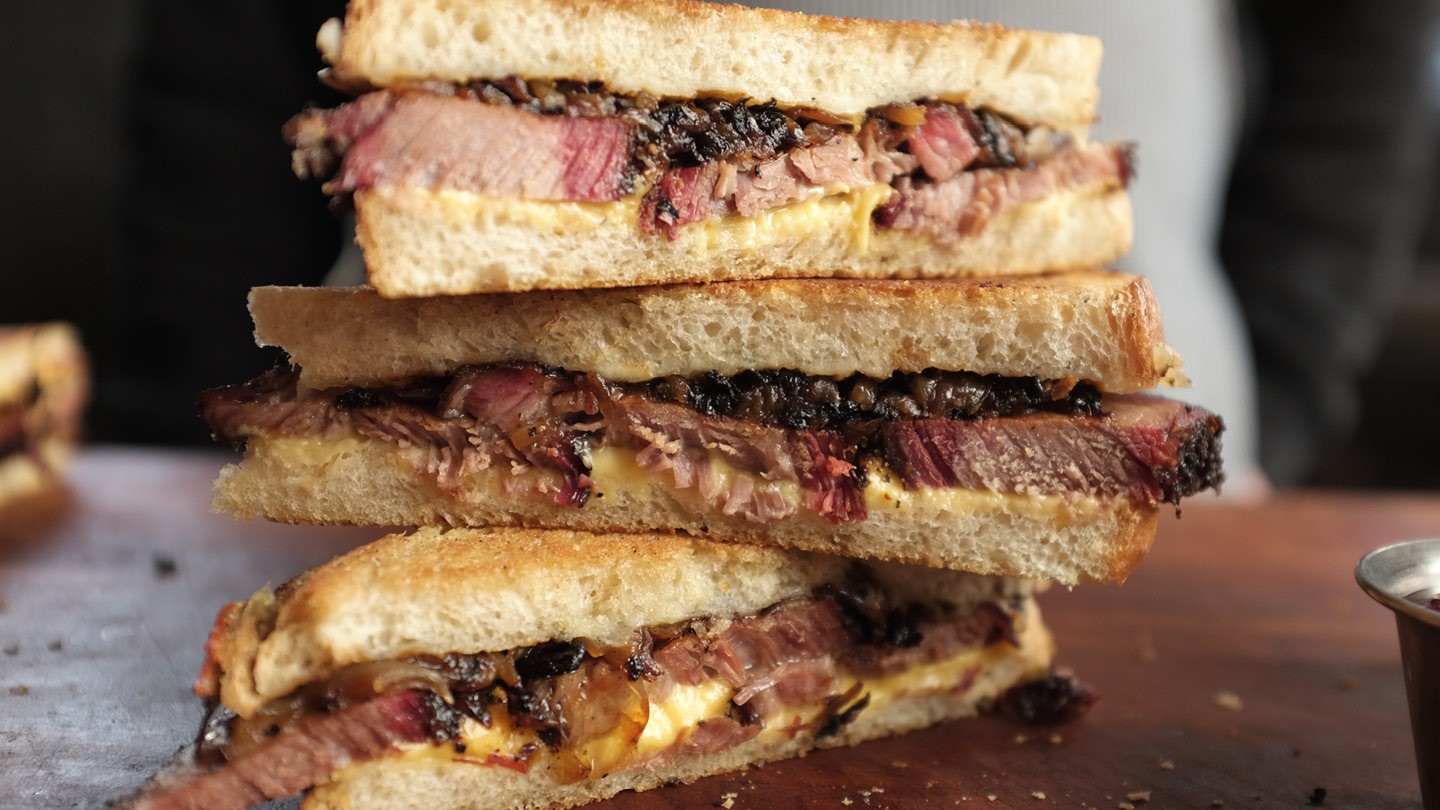
Recipe Note
Other Recipes You Might Enjoy:
Recipe Highlights and Insights:
While brisket is a popular choice for the recipe you provided, there are several other cuts of beef that could be used as alternatives, each offering its own unique flavor and texture profile. Here are a few options:
Chuck Roast: Similar to brisket, chuck roast is a flavorful and well-marbled cut of beef that becomes tender and juicy when cooked low and slow. It's often used in pot roasts and braised dishes, making it a suitable substitute for brisket in recipes like barbecue sandwiches or melts.
Short Ribs: Beef short ribs are known for their rich, beefy flavor and succulent texture. When cooked low and slow, they become incredibly tender and flavorful, making them a delicious option for sandwiches or melts.
Beef Shank: Beef shank is a tougher cut of meat that benefits from long, slow cooking methods like braising or stewing. While it may require a longer cooking time compared to brisket, beef shank can yield tender, flavorful meat that pairs well with caramelized onions and melted cheese in a sandwich or melt.
Chuck Eye Roast: Sometimes referred to as the "poor man's ribeye," chuck eye roast comes from the same area of the cow as ribeye steak and offers similar flavor and tenderness. It can be cooked low and slow to produce tender, juicy meat that works well in sandwiches or melts.
Top Sirloin: While not as fatty or marbled as brisket, top sirloin is a leaner cut of beef that can still be flavorful and tender when cooked properly. It's best suited for grilling or roasting rather than slow cooking, but thinly sliced top sirloin can make a tasty addition to sandwiches or melts when seasoned and cooked quickly over high heat.
These are just a few examples of cuts of beef that could be used as alternatives to brisket in your recipe. Depending on your personal preferences and availability, you may also consider other cuts such as flank steak, skirt steak, or even beef chuck steak. Experimenting with different cuts can add variety and new flavors to your dishes.
Nutrition
Nutrition
- Serving Size
- Quarter Sandwich
- per serving
- Calories
- 890
- Fat
- 80 grams
- Saturated Fat
- 44 grams
- Cholesterol
- 192 milligrams
- Sodium
- 1533 milligrams
- Carbs
- 18 grams
- Fiber
- 1 grams
- Sugar
- 5.6 grams
- Protein
- 27.7 grams